- Home
- Rabindranath Tagore
Selected Poems Page 4
Selected Poems Read online
Page 4
Tagore started to translate through a sequence of accidents. At the age of fifty, he was suddenly physically and emotionally exhausted. Not only had his literary labours been unremitting; there had been his energetic involvement in the public affairs of Bengal; there had been his school at Santiniketan, inaugurated in 1901; and there had been a shattering series of bereavements – wife, second daughter, father and youngest son. All this threw Tagore in upon himself, producing the austere devotional songs of the Bengali gītāñjali (1910); and it is crucial to remember that Tagore’s literary entrée to the West came at this particular phase in his art, setting the tone for all that was later expected of him abroad. To revive body and mind, he planned a trip to England (he had been twice before, in 1878 and 1890, but had made no mark then). He needed medical treatment, and he also claimed that he needed to relate his educational experiment to the world outside.
In March 1912 he was due to sail, but suddenly fell too ill to leave. He went to Shelidah, the family estate in north Bengal, to recover; and while he was there – too weak to write anything new – he diverted himself by translating the songs in gitāñjali. When he was well enough to sail in May, he went on with the translations on the ship. On arrival in London he went straight to the home of William Rothenstein, who had met Tagore on a painting tour of India in 1910. Rothenstein had already seen a few translations of Tagore’s poems done by Ajit Chakravarty, a teacher at Santiniketan, and had been impressed. He asked to see more – Tagore showed him the exercise book he had filled with translations, Rothenstein showed them to Yeats, and on 7 July 1912, Yeats read out the poems at a gathering in Rothenstein’s Hampstead home that included Ernest Rhys (who wrote a book about Tagore, published in 1915), Alice Meynell, Arthur Fox Strangways (who played an important part in securing Tagore’s profitable contracts with Macmillan) and Charles Freer Andrews (who became one of his most loyal associates at Santiniketan). The whole extraordinary business quickly gathered a momentum of its own, with the India Society edition of Gitanjali before the end of the year, rapturously reviewed, quickly followed by the Macmillan edition, and a sudden literary craze powerful enough for Thomas Sturge Moore to make his successful proposal of Tagore’s name to the Nobel Prize Committee in 1913.
Tagore’s popularity in England did not actually last very long: his lectures on Nationalism (1916) caused offence to a nation at war, and the return of his knighthood after the Jallianwala Bagh massacre in Amritsar in 1919 effectively killed his English reputation. In America – Britain’s ally – these acts had also caused offence, and he was coolly received there during his second visit in 1920. His most astonishing successes were in Europe, his tours of 1921, 1926 and 1930. For this, especially the sometimes hysterical acclaim he received in Germany, there may be good historical reason, though no one has yet been able to assess it objectively: and the fame and the charisma had already been established. But the short-lived English fashion remains something of a mystery; as remote and peculiar as the craze for the spurious poems of Ossian in the 1760s.
Were Tagore’s translations spurious? They were started in all modesty, and the first book, Gitanjali, was the best. Thereafter their increasing inaccuracy and truncatedness owed something to the sheer pressure of work on Tagore, something to the fact that their success gave him inflated confidence in their quality (late in life he looked at them much more wryly: in a letter to Rothenstein in 1932 he regretted that they had been published at all). Short stories were generally farmed out to other people, and were scarcely glanced at by an over-busy Tagore. The plays are a nadir of unfaithfulness (Sacrifice, twenty-nine obscure and formless pages in English, is a brilliant, ambitious, cogent five-act drama in Bengali). But leaving the inferior work aside, even Gitanjali has not stood the test of time, could not have remained sufficient basis for the survival of a reputation after the formidable, tall, robed and bearded bearer of that reputation had gone from the world scene. The reason for this is not inaccuracy – Gitanjali is on the whole reasonably accurate; nor that Gitanjali represented only a fraction of Tagore’s sixty-odd books of verse (a really fine translation of a single book might revive Tagore’s reputation today); nor that it represented the religious rather than the humanistic strain in Tagore (it is false to distinguish the two); nor even that the language of the translations has dated. The simple, most elementary reason – perceived clearly only by Ezra Pound in reviews of Tagore in 1913 in the Fortnightly Review and the New Freewoman – was that most of the lyrics that Tagore chose to translate are actually songs, intimate combinations of words and melody. I shall say more about the songs in the next section of this Introduction. Let me simply say here that I do not believe you can translate songs, and I have not tried to translate songs in this book. Tagore himself said in Creative Unity (1922) that a song without its melody is like a butterfly whose wings have been plucked, and in My Reminiscences we read of his reluctance to publish books of the words of his songs, for that very reason.
Though he died only sixty years ago, Tagore as he presented himself to the world outside Bengal is far from us today: far because of the dependence of his sudden Western success on a very special set of factors, hard to define; far because his own translations do not really take us close to the scope or fabric of his creative work. The ideals that he preached are far, too – though no more so today than in his own day. In sober moments, such as the end of his second lecture on Nationalism, he knew that his voice was too feeble, too vulnerable to the charge that he was naïve or unpractical, for it to have any effect on the progress of modern civilization towards (though he died before Hiroshima) what he feared would be self-destruction.
The idealism kept him far from his countrymen too, deeply involved though he was in the life and culture of Bengal. There was a loftiness, a refusal to compromise, that eventually distanced him from the Indian nationalist struggle, though Gandhi and Nehru acknowledged their debt to him to the last, Gandhi calling him ‘The Great Sentinel’, the conscience of the sub-continent, Nehru (in a letter to Tagore’s biographer Krishna Kripalani) describing him, with Gandhi, as one of the two outstanding personalities in the world in the last quarter of a century. The loftiness – which included immense stoicism in the face of more personal bereavements than any man has a right to suffer – was another inheritance from his father Debendranath, who was known as Maharshi or ‘great seer’; but Tagore despite his deep religious feeling would not have liked such a title, for running through all his writing, and above all his songs, is not the full self-realization or enlightenment of a mystic or seer, but a passionate human yearning: a sense of the Ideal always being out of reach. His perceptions could bring him joy – in Nature and in children especially – but never the self-satisfaction of the religious fanatic, of one who has ‘found the truth’. More often his idealism brought him sorrow, realization that most of his efforts had been futile, that in his beloved school and university at Santiniketan he had, knowingly, tried to fly against the truth (expressed at the end of his third lecture on Personality) that institutions, like kingdoms and nations, fade in the air like dreams.
He is near
In this Introduction I am deliberately distancing myself from my material: chapter and verse for Tagore’s ideas will be found in the Notes at the end of the book. But the ringing conclusion to the second lecture in Nationalism (1916) deserves to be quoted in full:
I know my voice is too feeble to raise itself above the uproar of this bustling time, and it is easy for any street urchin to fling against me the epithet of ‘unpractical’. It will stick to my coat-tail, never to be washed away, effectively excluding me from the consideration of all respectable persons. I know what a risk one runs from the vigorously athletic crowds in being styled an idealist in these days, when thrones have lost their dignity and prophets have become an anachronism, when the sound that drowns all voices is the noise of the market-place. Yet when, one day, standing on the outskirts of Yokohama town, bristling with its display of modern miscellanies, I watched
the sunset in your southern sea, and saw its peace and majesty among your pine-clad hills, – with the great Fujiyama growing faint against the golden horizon, like a god overcome with his own radiance, – the music of eternity welled up through the evening silence, and I felt that the sky and the earth and the lyrics of the dawn and the dayfall are with the poets and idealists, and not with the marketmen robustly contemptous of all sentiment, – that, after the forgetfulness of his own divinity, man will remember again that heaven is always in touch with his world, which can never be abandoned for good to the hounding wolves of the modern era, scenting human blood and howling to the skies.
This passage is utterly characteristic: the passion and dignity of Tagore’s idealism; the sense of horror at human evil; a tragic feeling of farness and isolation from the world as it is actually run by professional men; and a profound feeling of nearness to the world of the spirit: all are there. Spiritual reality was never for Tagore an esoteric thing, confined to arcane literature or ritual or any one church or sect. It was immediately and perpetually perceptible in the world and in experience: in the beauty of Nature, in human love, in children. He was a romantic – in a late poem in naba-jātak (1940) he self-deprecatingly admits that he is an unrepentant romantic; but if one has no touch whatsoever of romanticism as Tagore defined it one is scarcely human. Tagore expressed his romantic and religious perception most profoundly in his songs: the essential harmony and beauty of the universe (a harmony and beauty that could never be described by science, for all his interest in science) was best conveyed through music. It is vital to understand this. It explains why Tagore – mistakenly, as he must later have realized – tried to translate his songs, or poems that were close to the world of his songs. He felt that his greatest gift was for music, and it was this that he should try to communicate to the outside world.
I have no doubt that he was right in his self-assessment. Ambitious and intelligent though his prose was, daring and original though his drama was, endlessly varied and inventive though his poetry was, Tagore’s genius showed itself most naturally and faultlessly in his songs. He often said that his songs would be remembered when all his other works were forgotten, and it is undoubtedly true that in Bengal today it is his songs that are best known. They are not always well or faithfully performed; singers do not always understand the thought and feeling behind the songs; but they are loved. It is in his songs that Tagore is nearest to his people and culture. They appeal to a wide social range; they keep alive in an increasingly urban people a responsiveness to nature and landscape and the seasons, a sense of the divine, an ideal of love, a patriotism that is distinct from chauvinism. The Tagore who with his songs rallied massive processions against Curzon’s proposal to partition Bengal in 1905, or who marked the breaking of Gandhi’s fast-unto-death in Poona Jail in 1932 by singing a song from gītāñjali for him, is no longer here; his intermittent involvement in public life may even be embarrassing to memory; but his songs live on, and transcend by their genius all distrust of his idealism or egoism, all criticism of failings in his other works of art.
I have already said that I do not believe one can translate songs, and none of the poems in this book are songs (Tagore made a song out of lines from ‘New Rain’, but the original poem is a poem, not a song). Music is the art that is both most specific to a people and a culture (who but Englishmen can understand Anglican anthems?), and the one that can cross national frontiers. I do not think it impossible that Tagore’s songs will one day be known and appreciated outside India (they are much easier for a Westerner to follow than the instrumental Indian music that we do now hear quite often); but they will have to be known as songs. Translation of the words will not be enough.
There is a song that Tagore translated in The Gardener.
The tame bird was in a cage, the free bird was in the forest.
They met when the time came, it was a decree of fate.
The free bird cries, ‘O my love, let us fly to the wood.’
The cage bird whispers, ‘Come hither, let us both live in the cage.’
Says the free bird, ‘Among bars, where is there room to spread one’s wings?’
‘Alas,’ cries the cage bird, ‘I should not know where to sit perched in the sky.’
The free bird cries, ‘My darling, sing the songs of the woodlands.’
The cage bird says, ‘Sit by my side, I’ll teach you the speech of the learned.’
The forest bird cries, ‘No, ah no! songs can never be taught.’
The cage bird says, ‘Alas for me, I know not the songs of the woodlands.’
Their love is intense with longing, but they never can fly wing to wing.
Through the bars of the cage they look, and vain is their wish to know each other.
They flutter their wings in yearning, and sing, ‘Come closer, my love!’
The free bird cries, ‘It cannot be, I fear the closed doors of the cage.’
The cage bird whispers, ‘Alas, my wings are powerless and dead.’
This translation is unsatisfactory: it is not badly inaccurate, but any English reader will be worried by phrases such as ‘My darling’, ‘the speech of the learned’, ‘Alas for me’. It also leaves out a whole verse, though the English reader is not to know that. But a more exact or stylistically happy translation would not be the answer.
I could render the first verse as follows:
There was a caged bird in a golden cage, there was a forest bird in the forest
.Somehow the two came together, there was something in the mind of Fate.
The forest bird says, ‘Caged bird, friend, let us go off together to the forest.’
The caged bird says, ‘Forest bird, come, let us stay alone in the cage.’
The forest bird says, ‘No, I will not let myself be fettered.’
The caged bird says, ‘Alas, how can I go outside into the forest?’
I could try to polish the translation, make it more natural in English, introduce rhyme or half-rhyme. I could write a lengthy note, relating the song to all Tagore’s most characteristic dualities: sky and earth, freedom and restriction, infinite and finite, eternal and mortal, soul and self, God and the world. But none of this would help. Heard in a good performance – by Shantidev Ghosh, doyen of rabindra-sagīt (Tagore music) singers at Santiniketan, for example – it is apparent to anyone that the mood, the feeling, the truth of the song are all in the melody. It is an exquisite piece: it expresses in a way that is utterly real but impossible to define both ‘nearness’ to the world of the spirit (the closeness of the two birds) and ‘farness’ from it (the bars that seperate them). It is haunting, tender, humane, humorous, subtle. For those who belong to Tagore’s culture, it keeps him ever near, an abiding, comforting voice.
Tagore is near to his people. Can he ever be near to foreigners, removed from his land and language, deprived of his song?
If I did not believe that there were ways in which Tagore can be near to us, I would not have attempted this book; and these ways can be placed under three main headings: he was a romantic, he was modern, and he was human.
The influence of English poetry on Tagore and other Bengali poets of modern times can be greatly over-emphasized: Bengali critics themselves tend to do so, perhaps because they have often studied English literature before their own. But there is no doubt that the reading and appreciation of English poetry was an important strain in nineteenth-century Bengali culture. Derozio, whom I mentioned earlier, was a good poet after the manner of early Byron or Thomas Campbell; and a later and equally influential teacher at Hindu College – Captain D. L. Richardson – was an excellent critic and a good lyric poet. Richardson published a number of miscellaneous essays and poems (Literary Leaves, 1836, Literary Chit-chat, 1848, Literary Recreations, 1852), and in his time he was the literary leader of the British community in Calcutta – with whom writing verse had long been a popular pastime. They influenced some Bengalis to do the same. The foremost Bengali poet before Tago
re, Michael Madhusudan Datta, began his career by writing in English: his poem The Captive Ladie (1849) shows the influence of Byron and Moore; other poems, more interestingly, show the influence of Keats. By the time Tagore started writing, Madhusudan had already shown the futility of writing poetry in English, and Tagore never attempted it (he wrote only one original poem in English, The Child, written after seeing the Oberammergau Passion Play in 1930). But his youthful contact with English poetry is well attested. He was made to translate Macbeth into Bengali by a tutor when he was twelve; his early volume kari o kamal (Sharps and Flats, 1886) includes translations of Shelley, Victor Hugo, Mrs Browning, Christina Rossetti, Swinburne, Hood, Aubrey de Vere, Moore and others. Indeed as a young poet he was sometimes called the ‘Shelley of Bengal’, because of the habit of identifying Bengali writers with English writers (Madhusudan was the ‘Milton of Bengal’, Bankim was the ‘Scott of Bengal’, and so on). English poetry meant less and less to Tagore as time went on, but the seeds had been sown. A poem like ‘On the Edge of the Sea’ is to an English reader a strange mixture of the foreign and the familiar: it is both Indian and Keatsian. English poetic influence (mainly Romantic poetry, major and minor, and Shakespeare) is the point of contact between us and Indian poetry of the last century-and-a-half.

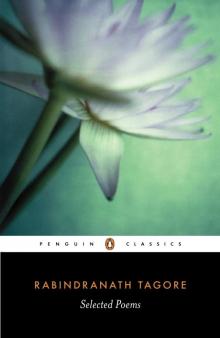 Selected Poems
Selected Poems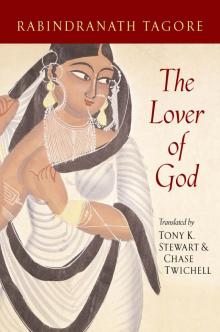 The Lover of God
The Lover of God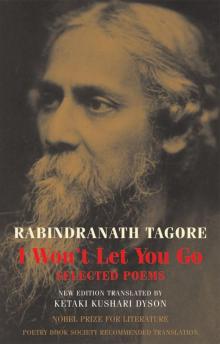 I Won't Let You Go: Selected Poems
I Won't Let You Go: Selected Poems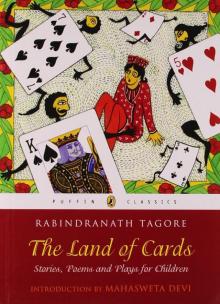 The Land of Cards: Stories, Poems, and Plays for Children
The Land of Cards: Stories, Poems, and Plays for Children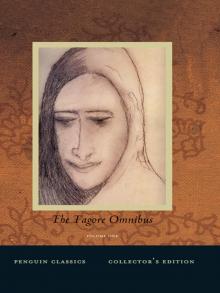 The Tagore Omnibus, Volume One
The Tagore Omnibus, Volume One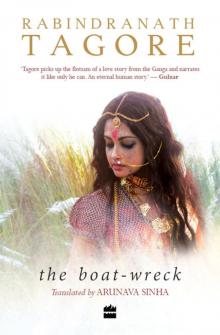 The Boat-wreck
The Boat-wreck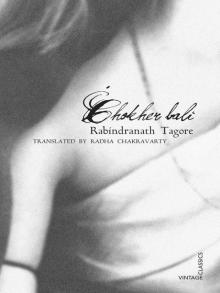 Chokher Bali
Chokher Bali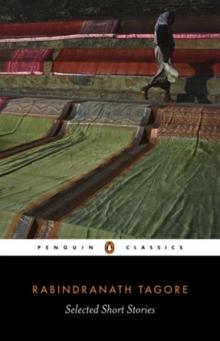 Selected Short Stories
Selected Short Stories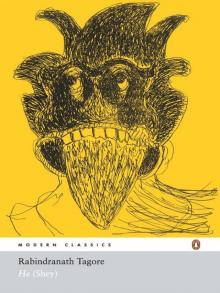 He (Shey)
He (Shey)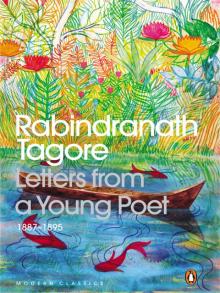 Letters From a Young Poet 1887 1895
Letters From a Young Poet 1887 1895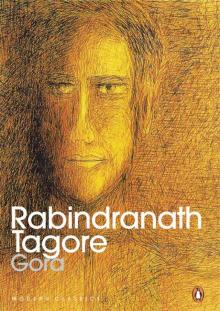 Gora
Gora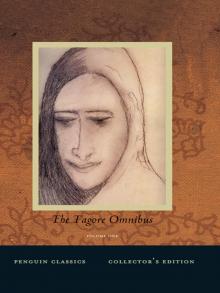 Tagore Omnibus, Volume 1
Tagore Omnibus, Volume 1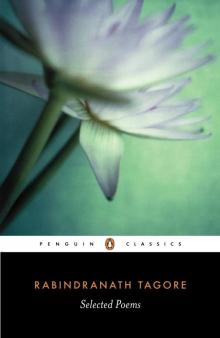 Selected Poems (Tagore, Rabindranath)
Selected Poems (Tagore, Rabindranath)